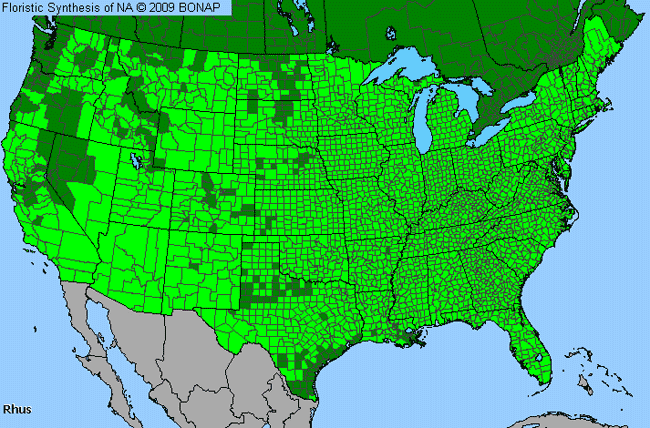Sumac (Rhus)

Sumac Genus Details

Sumacs are coarse-growing, suckering shrubs to small trees with whitish sap. The leaves are pinnately compound, 12" long with a shiny green color on the upper side of the leaves and a whitish color beneath. The flowers are less than 1/8" wide with 5 white petals. The fruit is more than 1/8" in diameter and matures in late summer. The fruit contains 1 seed that is dark red and covered with short, sticky, red hairs. Sumac is found in open uplands and sandy soils throughout North America. Raw round sprouts were eaten by Native Americans as salad. The sour fruit can be chewed to quench thirst or prepared as a drink that tastes similar to lemonade.
Sumac Allergy Info

Allergic reactions have been reported from Rhus. These include contact dermatitis and pollen allergies.
Sumac Pollen Description

Grains are prolate to spheroidal; the amb triangular with convex sides and 3-colporate or occasionally brevicolpate to porate. The colpi are typically long and narrow and the sexine is often striate
Pollen grains are generally 25-30 micrometers.
Species in This Genus

Allergenicity Legend:
 Mild Allergen |
Mild Allergen |
 Moderate Allergen |
Moderate Allergen |
 Severe Allergen |
Severe Allergen |
 Allergy Test Available
Allergy Test Available
Sumac (Rhus) is a genus of the ANACARDIACEAE family.
This genus includes the following allergenic species:
This genus includes the following allergenic species:













